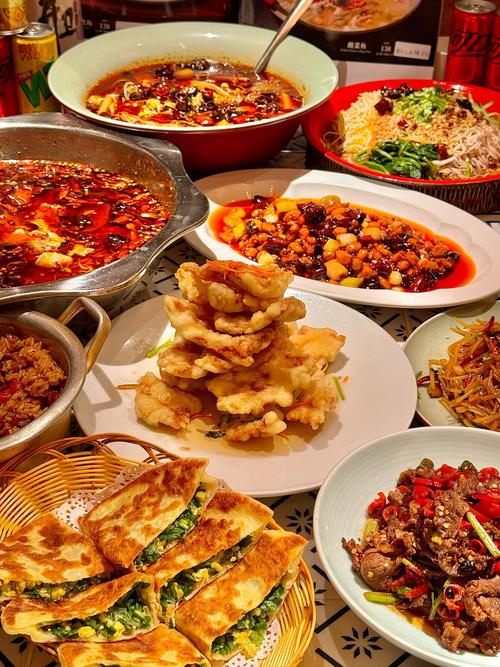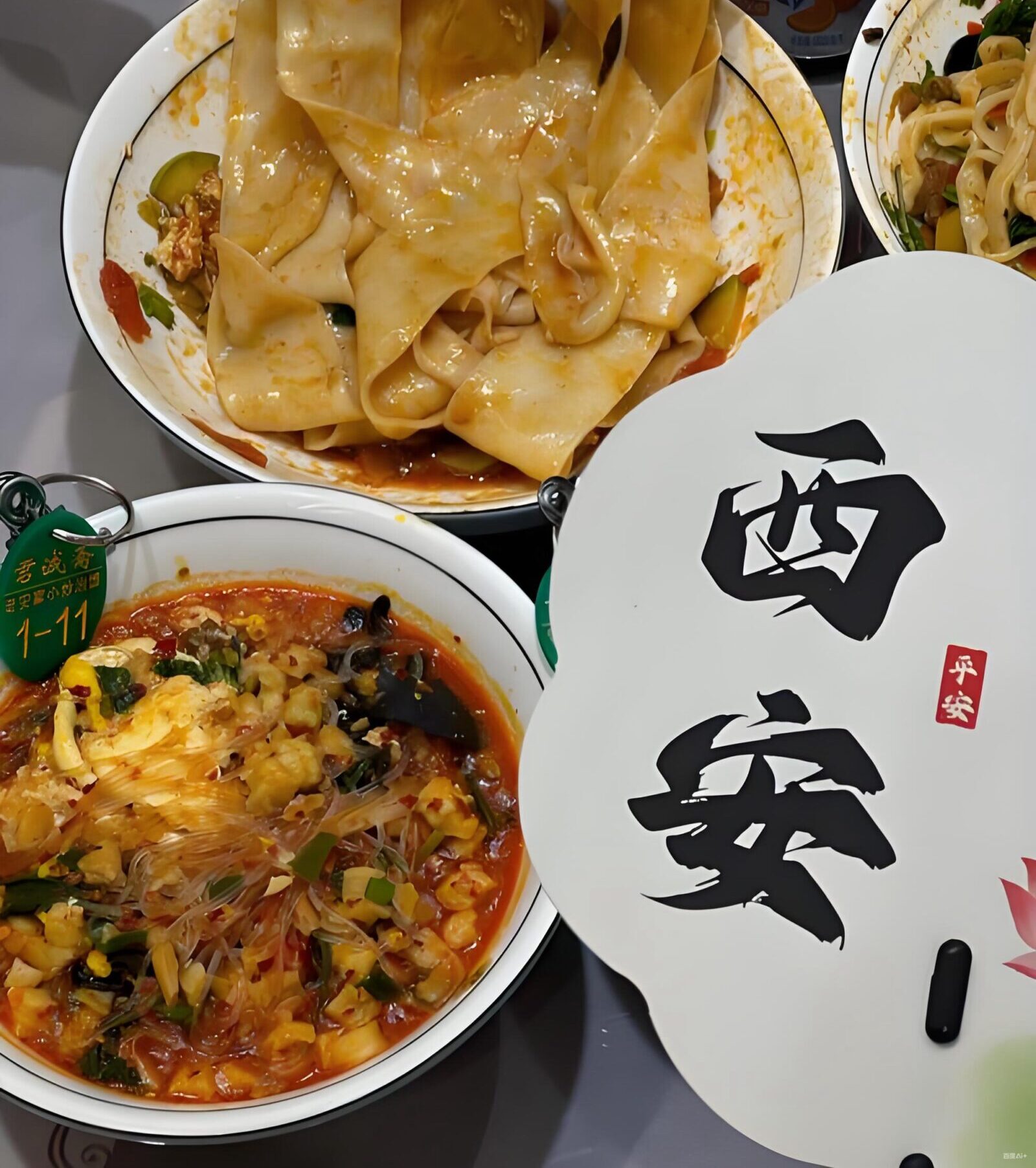When you first arrive in Guangzhou, you’ll discover that the heartbeat of the city beats in unison with its food. The in-your-face whiff of roast meats, the hiss of bamboo steamers and the warm, neon glow from signs pointing the way to late night dessert shops means that each bite of food comes with a side order of culture shock. There, where food isn’t simply fuel but a way of living and that you will find spun through every street corner, market hall and family gathering. From the frenetic morning vibe of dim sum rush to the hushed late-night cocoon of sweet soup, the city unfurls like a food narrative, one bite at a time. It is an odyssey for the senses, a summons to slow everything down and really taste. This is how you eat in Guangzhou.
Dim Sum: Savoring Tradition
Har Gow (Shrimp Dumplings)
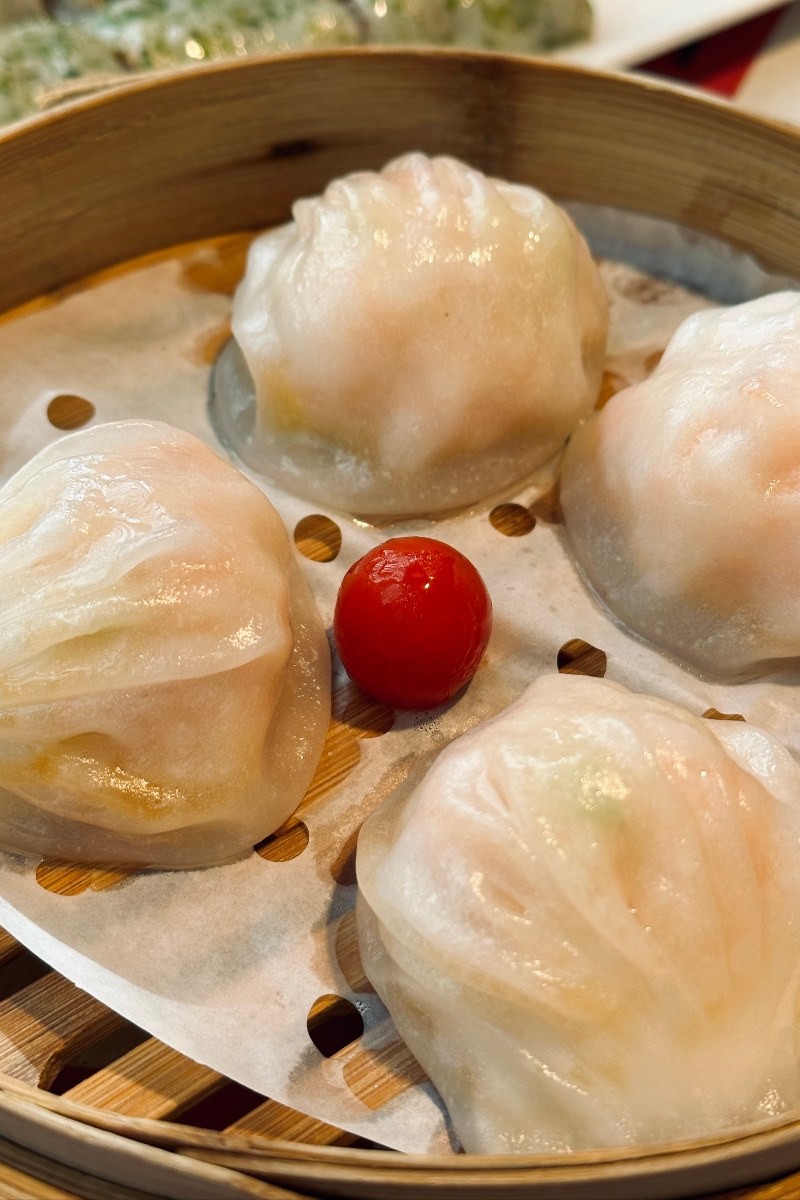
Har Gow
Dating back nearly a century, har gow has its origins in Guangzhou’s fishing villages. Chefs wrapped river shrimp in gossamer rice flour skins to honor a good harvest. The transparent casing, which displayed the fresh shrimp within, came to be seen as a sign of a talented chef. This history made so much more depth when I first tried them. I understood that this dumpling was more than a snack: It was pride on a plate. You’ll still find restaurants such as Guangzhou and Tao Tao Ju that make them fresh each day, keeping the tradition going.
The ingredients are straightforward — shrimp, bamboo shoots, a dab of pork fat. The art of it all is in the pleating and the gossamer wrapper that never, ever splits. Chefs time the steaming carefully. Too long and the dumpling sticks; too short and the filling remains raw. I watch chefs in open kitchens play basketball with bamboo steamers, in some cases. It looks like performance art. That care is what makes har gow a true test of Cantonese technique.
Eating har gow is a sensual experience. The wrapper shivers when you raise it. Then it bursts, briny-sweet, in your mouth when you bite into it. The locals dip them gently in soy sauce, but I like to eat them plain for the pure flavor of the sea. A basket of four dumplings will set you back ¥25–¥35. I always plan on two baskets, because they are that good. My tip: Order them in the morning at a classic teahouse. The freshness is a sure thing, and the noisy, lively setting will only sweeten your recollection.
Siu Mai (Pork and Shrimp Dumplings)
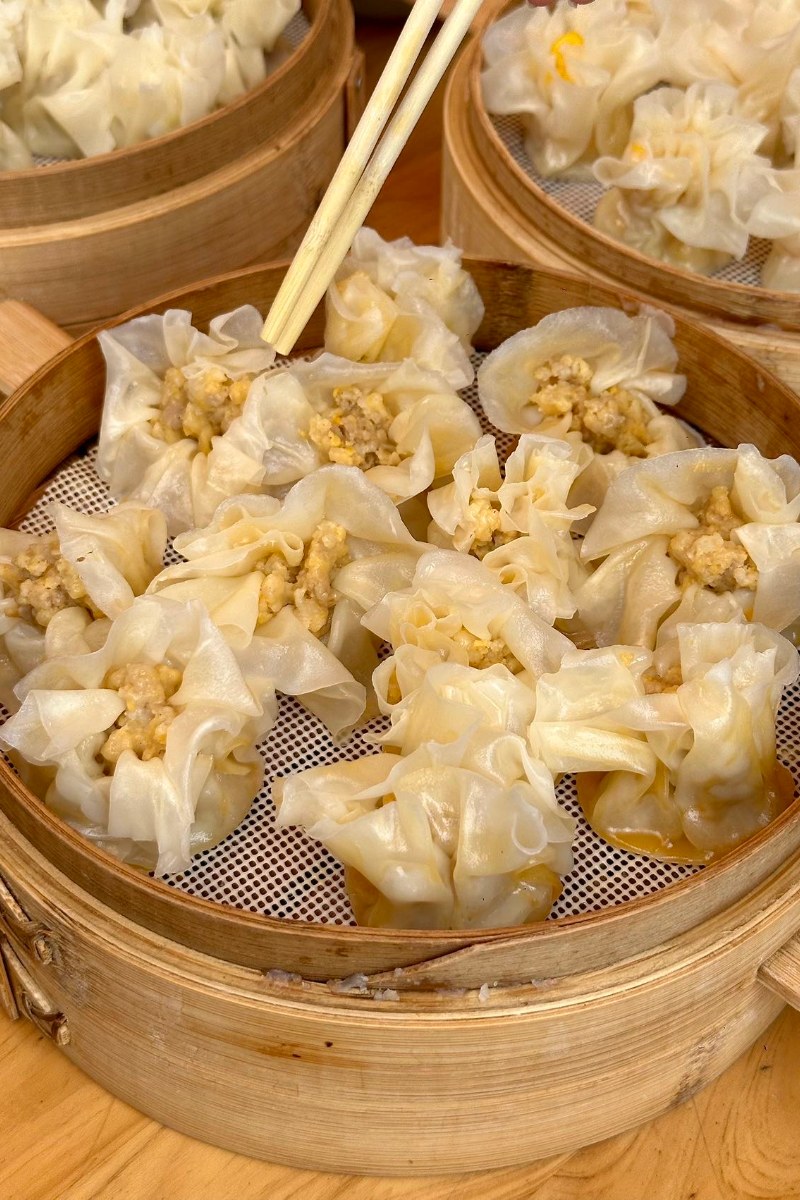
Siu Mai
Dating back to the Qing Dynasty, siu mai has a long history. It gained popularity in teahouses in Guangzhou as a substantial snack to accompany morning tea. Its open-top design exposes the filling, which conveys the concept of honest food. Local friends of mine remember their grandparents ordering basket after basket on childhood mornings. This makes me realize that siu mai is more than a food: it is a family tradition. Contemporary teahouses such as Tao Tao Ju still offer siu mai that pays homage to that legacy.
The filling is typically minced pork and shrimp accented by some mushroom or water chestnut. Chefs season it with a light hand so the meat remains juicy. Skilled cooks individually hand-pack each dumpling, capping them with roe or a slice of carrot. I think the big, touristy restaurant ones are terrible. The tiny bite-sized ones, though, simply melt in your mouth. Observing chefs fold and steam siu mai is an immediate window into the pace of Cantonese kitchens.
Your mouth should fill with savory juice when you eat siu mai. It goes especially well with teas like pu’er or jasmine. Many visitors from abroad, myself included, enjoy them dunked in chili sauce for added punch. Prices are around ¥20-¥30 for a basket of dumplings with four dumplings inside. The best place to consume them is in a bustling teahouse during breakfast hours. It's never more delicious than when consumed in a room full of animated chatter, clinking cups, and the steamy steam-filled air.
Char Siu Bao (BBQ Pork Buns)
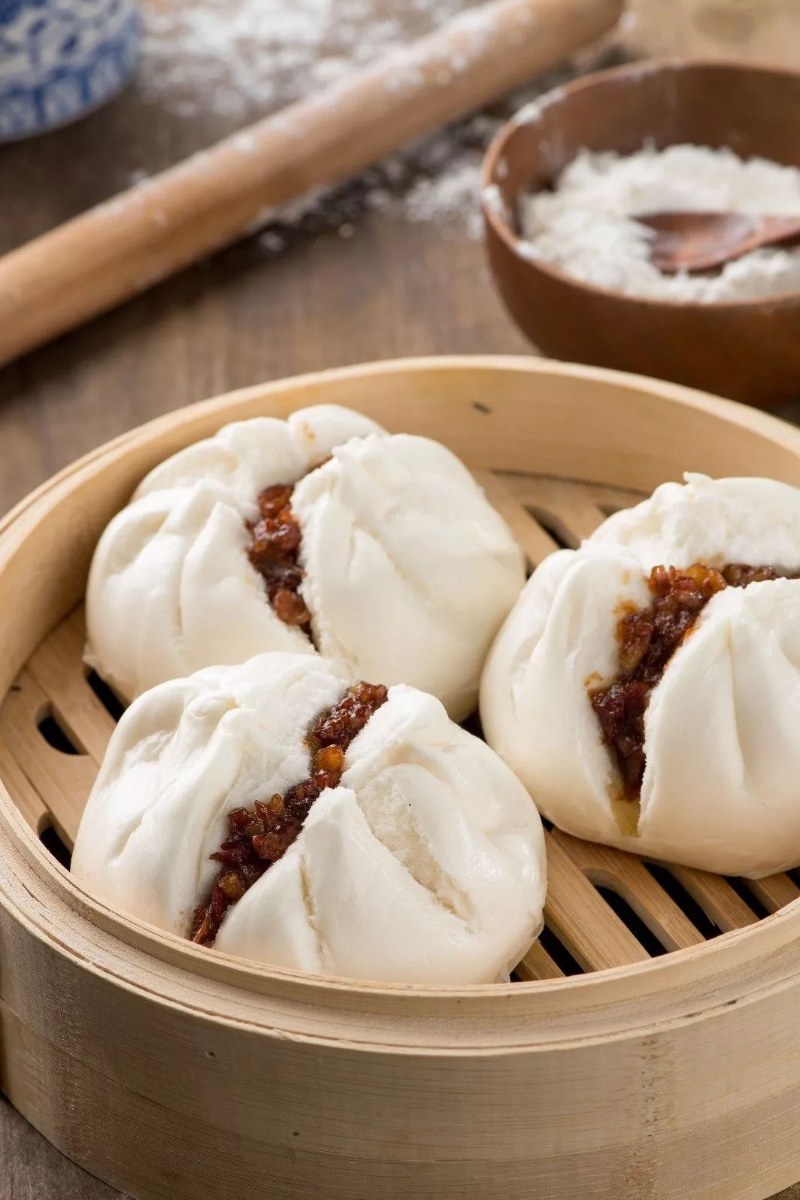
Char Siu Bao
A classic with the taste of Cantonese barbecue culture, char siu bao. Its roots lie in Guangdong’s roadside stalls. A snow-white bun conceals roasted pork with a soy, honey and five-spice seasoning. It’s a best of both sweet and savoury. I’ve heard that these buns were once carried by migrant workers as portable meals, which contributed to their popularity throughout southern China. Today, restaurants such as Lianxiang Lou and Guangzhou Restaurant maintain the tradition, and they serve freshly prepared ones every day.
Making them requires patience. The pork — marinated overnight, then roasted till it’s caramelized, then chopped and swaddled in yeasted dough — is the best you’ll ever eat. Steamed buns are born tender and almost cloudlike. When the rolls are baked, their crusts are golden. The result is a mix of texture — chewy filling on airy bun. It’s evidence of that Cantonese flair for playing the opposites. For me, it was that first time I ripped through a hot bun and a poof of warm scent escaped. It was a trip highlight.
The flavor is both soothing and startling. The sweetness is minimal and offset by smoky, roasted meatiness. At ¥18–¥28 for three buns, char siu bao is substantial enough to share, but I usually order one for myself. If you must, avoid the reheated frozen buns, those don’t have the outstanding smell and fluff. Instead, pair them with hot dishes, preferably from a teahouse where the bamboo steamers come hissing to your table. At that setting, eating char siu bao sums up the charm of Guangzhou food: uncomplicated, comforting and unforgettable.
If food is your travel compass, you’ll want to know Where Is Guangzhou: The Gateway to Southern China
Street Food: Devouring Local Flavors
Beef Offal Stew
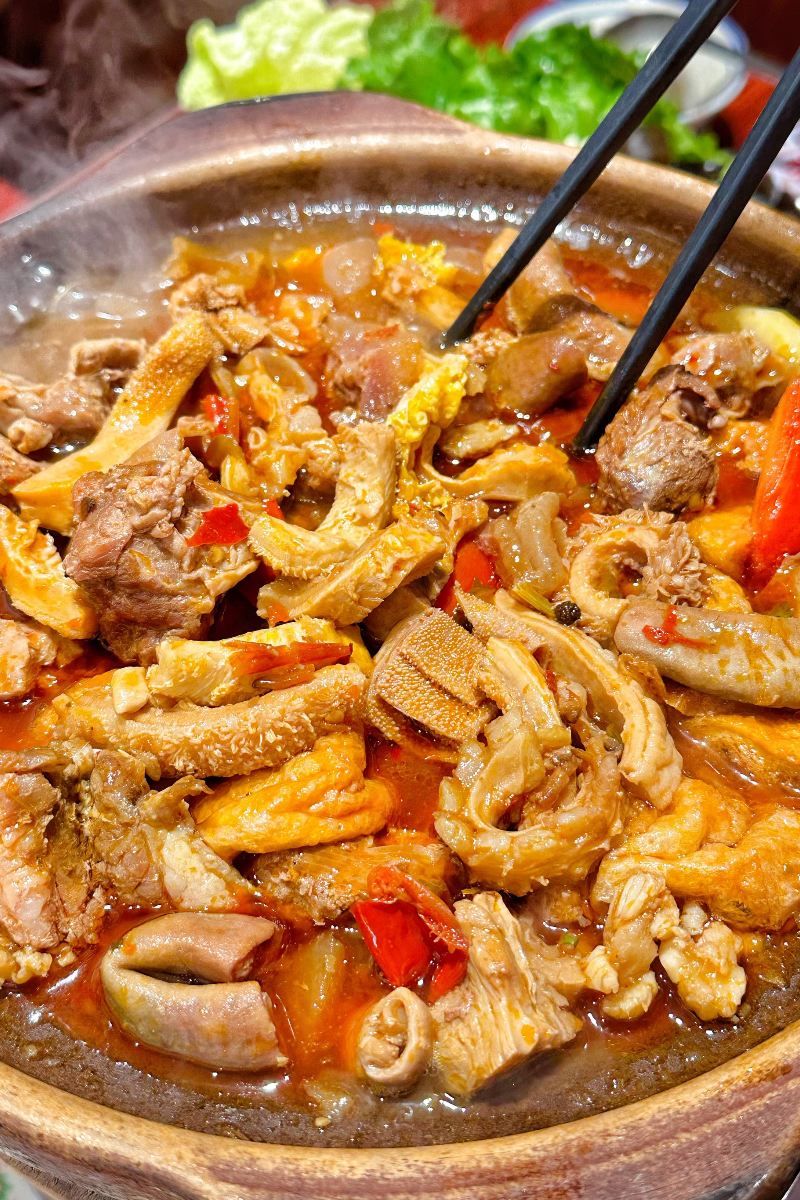
Beef Offal Stew
A long-time favorite in Guangzhou's markets is beef offal stew. It began when vendors boiled remaining cuts in fragrant broths to avoid waste. It’s a nostalgic street food today. Local residents tell me about childhood excursions to eat the dish with their parents, with steaming bowls set out in the cool night air. One place that keeps up this tradition is the Shangxiajiu Pedestrian Street. Stalls boast openly about their family recipes.
The broth is prepared with beef tripe, tendon, brisket, and a variety of herbs such as star anise and cloves. It’s slow-cooked for hours. Good vendors don’t use powders. They are created slowly, with time and patience, building flavors patiently. And observing them ladle stew from immense pots is a look at Cantonese street cooking. The luscious, pulpy texture and the chewiness and diversity of cuts means that no bite is the same. It’s sometimes bemusing, but never unsatisfying.
When it comes to eating beef offal stew, both filling and daring. The aroma is a lush, herbal, almost medicinal. The flavor stays with you long after you’re done. It costs ¥15–25 ($2.2–$3.7) a bowl – one of the cheapest meals in the city. For something trustworthy, head to the stalls around Shangxiajiu, or around the night markets in Haizhu. As a foreigner, the textures might be new to you, but that is a lot of what constitutes the Guangzhou food experience.
Ting Zai Congee
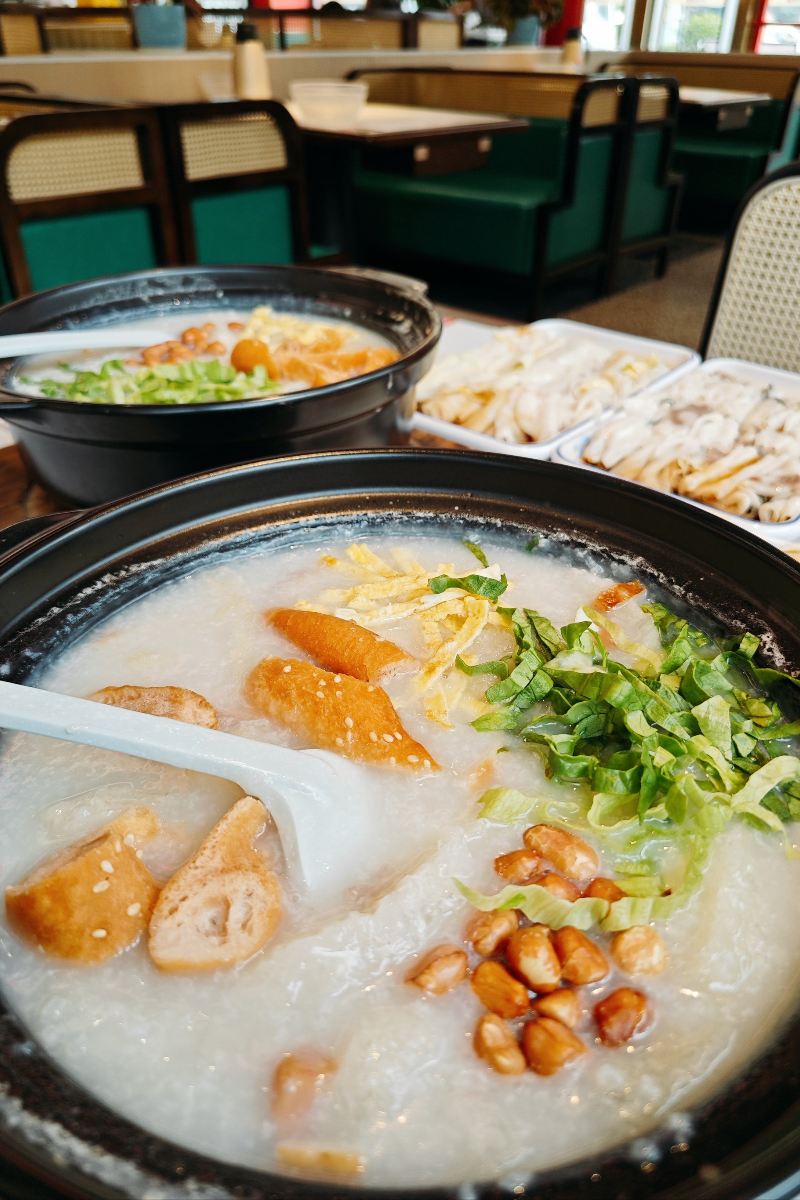
Ting Zai Congee
Also called “boat congee,” ting zai congee is a telling tale of Guangzhou’s Pearl River culture. This robust porridge was formerly sold to fishermen directly off their boats. They served warm meals to travelers on chilly mornings. The dish became iconic because it brought with it the flavors of river life, its humble ingredients combined into a meal that could sustain. Even now, riverfront stalls and Liwan District markets dish out bowls that pay homage to this legacy. It’s a cultural pit stop on a path of curiosity.
That porridge rests on a base of slow-cooked rice, turned creamy by long simmering. Vendors then top them with peanuts, squid, pork slices and occasionally jellyfish. So each ingredient brings a different texture. You have that nice crunch from the peanuts, a little bit of chew from the squid and still some softness from the pork. I love the way vendors scoop from steaming pots. The scent bakes into the soggy air of Guangzhou’s old streets. This one demonstrates how even a basic rice can be something worth traveling for when locals are at the grinding wheel.
Congee is what foreign visitors always expect it to be, sort of bland. But the ting zai congee will startle you with its contrasts. A bowl costs only ¥10–¥20. It’s a pocket-friendly introduction to Guangzhou food. I’m never without a couple of fried dough sticks (youtiao) from the local stall to go with it, to eat the way locals do for breakfast. To eat that congee is to come into communion with a piece of history, one spoonful at a time.
Sweet Soups
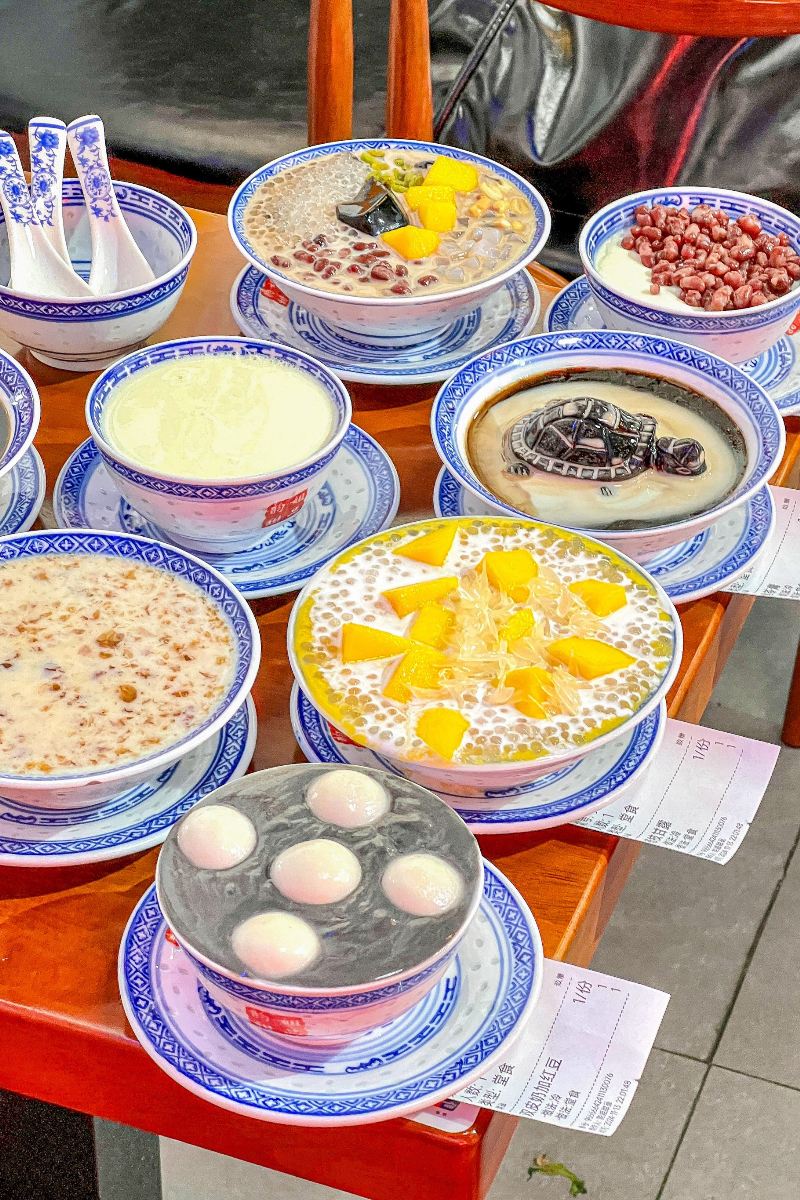
Sweet Soups
Tang shui, or sweet soups, are a mellower, more comforting side of Guangzhou’s food scene. They started in family kitchens, where mothers simmered beans and seeds into sweets thought to cool the body. Eventually, the old-school tang shui shops became popular social clubs. They’re open late into the night for couples, students and night-shift workers. The tradition is alive today, and it is evidence of how food here, too, offers a solace and a rhythm for urban life.
Recipes vary widely. Some favorites are red bean soup, black sesame paste and green bean soup. All demand a good, long simmer in order for the beans to break down into a luscious, aromatic base. What I enjoy most is watching vendors scoop ladles of steaming bowls with practiced ease. They are frequently flavored with lotus seeds or tapioca pearls for texture. The dish emphasizes these and other core tenets of Cantonese cooking, like patience and balance. The scent of sesame paste or sweet beans wafts from a little shop in the night air.
Eating tang shui is the equivalent of relaxing after the city’s bustle. The prices are very affordable—at ¥12 to ¥18 a bowl. Lines are common at popular shops on weekends. You may find it lighter than Western desserts. Nap in an hour, but its mild sweetness is just the thing before bed. I suggest a place like Lianxiang Lou for its egg tarts with soup, or a distictive dessert café in Tianhe. A bowl of warm tang shui ends a day of investigating Guangzhou food with a feeling of peace, comfort and belonging.
Vegetarian Food: Discovering Plant-Based Delights
Luo Han Zhai
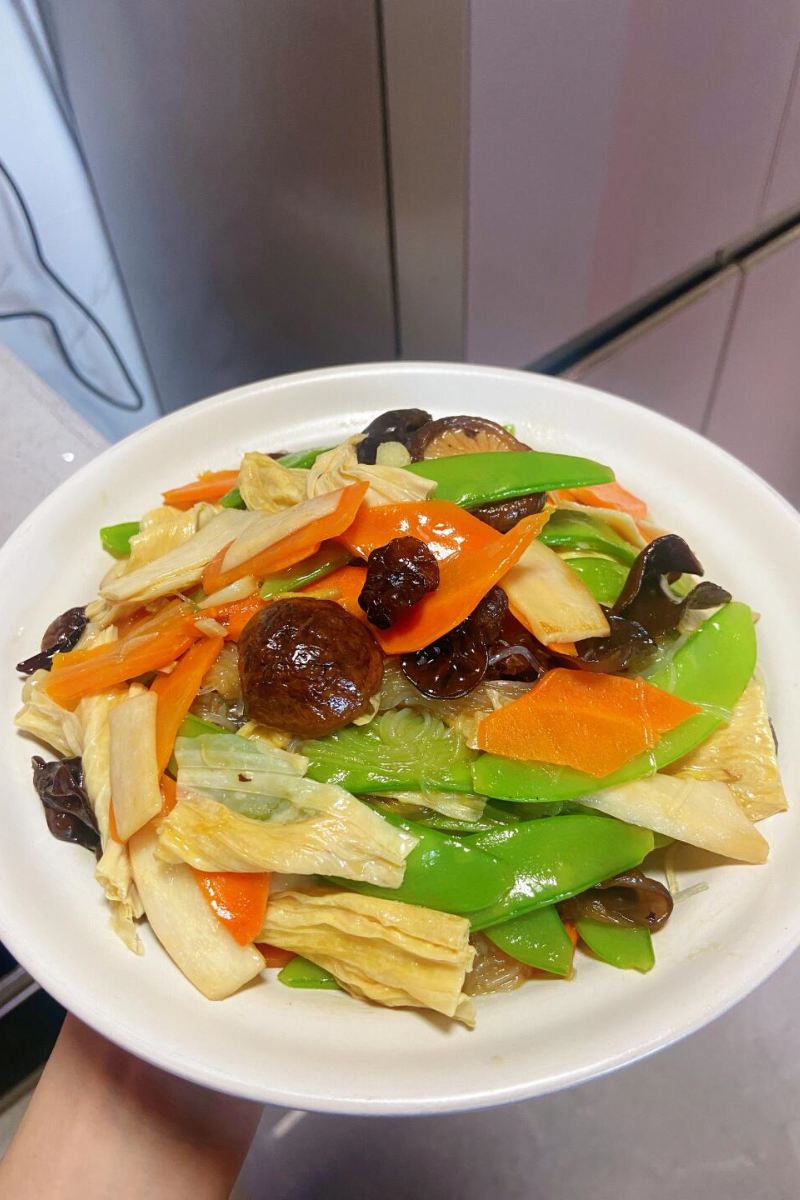
Luo Han Zhai
A dish with its origins in Buddhist temples, Luo Han Zhai, also called Arhat’s Vegetarian Dish. Monks cooked nourishing meals that weren’t composed of meat. The dish is multi-hued with its use of carrots, wood ear mushrooms, bean curd and bamboo shoots. Its symbolic meaning is one of purity and simplicity. I loved discovering an ancient tradition that today serves as a restaurant staple in Guangzhou. Contemporary vegetarian restaurants prepare this as a dish to expose the more tender side of Cantonese cuisine.
The preparation is light. They will also sometimes add sesame oil to boost the aroma. The result is a refreshing mishmash that puts other spicier cuisines to shame. For people who are accustomed to menullos weighing heavy on meats, this shows that Cantonese cuisine is all about fresh and texture. A meal starts at ¥40–¥60 per person. Chan Yi Tea House and Ci Sheng are the two that I’d recommend. Just be sure to ask, if you’re a strict vegetarian, to confirm with staff, as some kitchens may supplement with hidden meat broth.
Tofu Skin Rolls
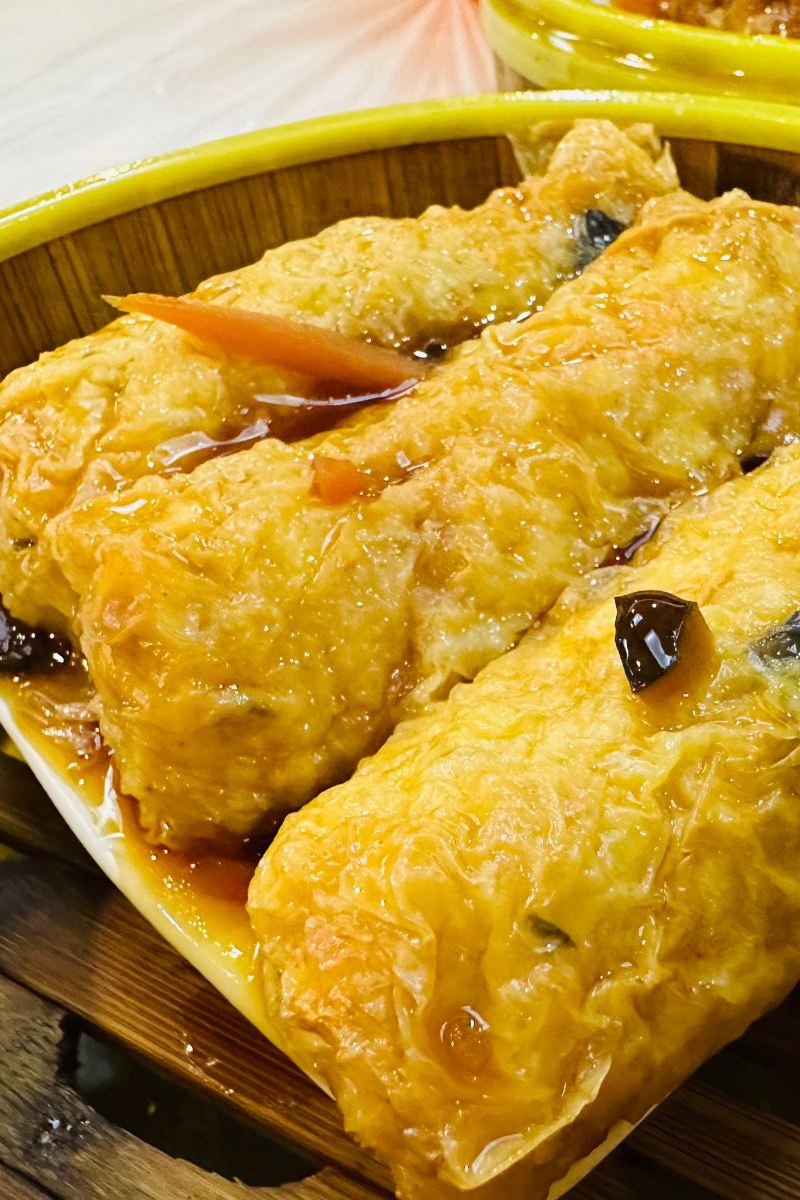
Tofu Skin Rolls
An enduring component of temple cuisine in Guangzhou, tofu skin rolls are called fu pi in Cantonese. Tofu skin was put to use by monks and families as a clever way to wrap vegetables, when meat was unavailable. This provided the dish with an irresistible symbolic connection to purity and thrift. Villagers used to tell me that they ate them during vegetarian festivals when every street was lined with stalls full of these golden parcels. This history gives a cultural dimension which I found intriguing.
The rolls are typically stuffed with mushrooms, carrots or vermicelli. They can be steamed or fried. By steaming, you get a soft, tender chew, while frying imparts a crunchy sheath with a moist filling within. Part of the pleasure is watching chefs turn them out in bustling kitchens. This takes some skill to fold the thin tofu skin without ripping it. I prefer those at Chan Yi Tea House, meticulously flavoured with sesame oil.
For adventurous foreigners, tofu skin rolls are safe and a surprise. Texture: It’s chewy but soft, kind of the intersection between pasta and spring rolls. The flavor is a celebration of the vegetables themselves, more than anything else. They’re also cheap, around ¥25 to ¥35 per plate, so they’re good for sharing. Opt for steamed for natural sweetness or fried for extra crunch. You’ll walk away with an enhanced sense of how varied Guangzhou food is.
Fine Dining: Experiencing Cantonese Cuisine
Steamed Grouper with Soy Sauce

Steamed Grouper with Soy Sauce
A classic dish in Cantonese banquets, steamed grouper has a long history. It is frequently used at weddings and New Year’s celebrations. It remains a showstopper in Michelin-starred restaurants in Guangzhou. The fish all comes in live and gets cooked right on the spot. This in line with Cantonese preference for freshness. In some parts of town, a grouper order is a polite way to qualify your host’s hospitality, many locals told me. For me, it was a window into this very deep food culture.
The preparation is deceptively simple. The fish is steamed — with ginger and scallion, then with a scant light soy sauce. This modest seasoning allows the fish’s sweet essence to take center stage. I smelled the subtle scent emanating from the plate. The fish was so easy to flake. A serving costs ¥300–¥500. And that assurance enables well-established restaurants like Bingsheng Pinwei to provide the finest. I have never done business with a place with no tanks I can see, since they'd try to pawn off frozen fish.
Old Fire Soup
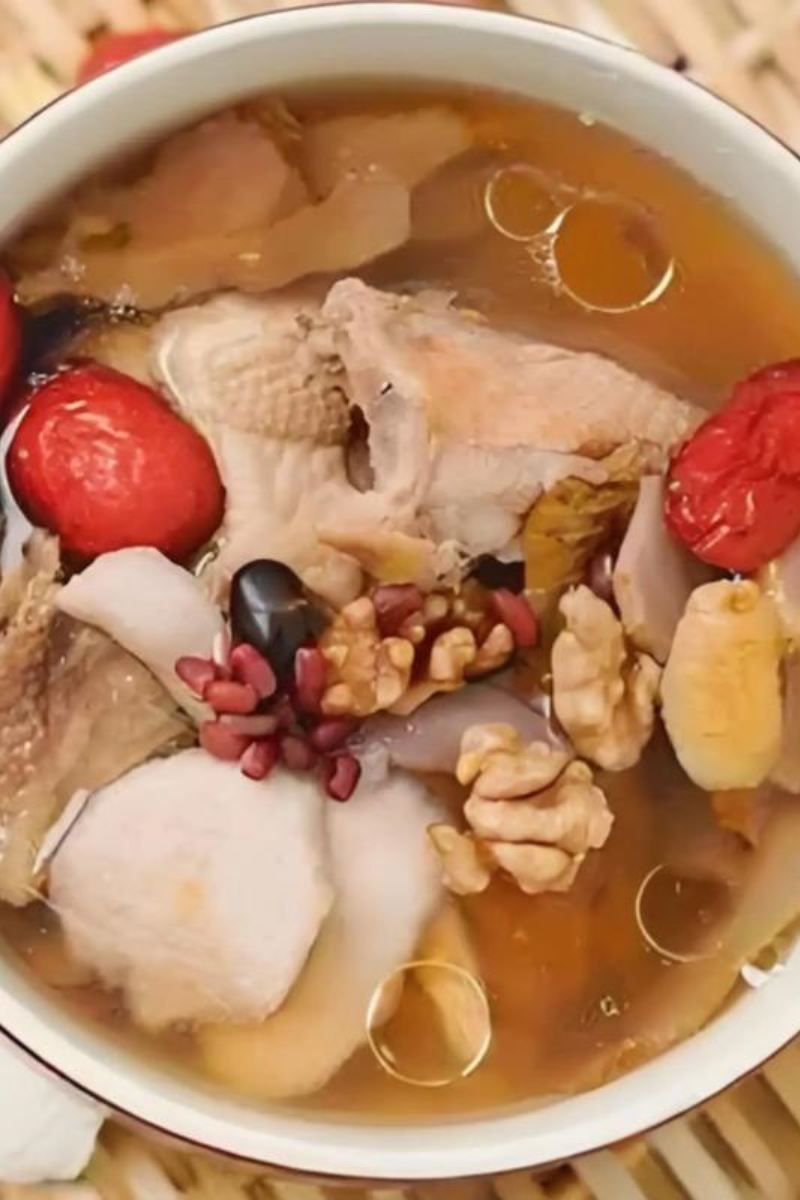
Old Fire Soup
The origins of old fire soup (lao huo tang) can be traced back to traditional Cantonese households. Families trusted in slow-simmered broths for good health. Recipes differ, but pork bones, dried figs and goji berries figure frequently. The soup has been described as nourishing to the lungs, or as benefiting the skin. It is handed down from generations as culinary and medicinal importance. This tradition is taken to yet another level in Guangzhou’s Michelin establishments. The soup comes in sleek bowls that recall the comfort of home.
Cooking takes several hours. Cover and cook the ingredients on low until the flavors meld into a transparent, slightly sweet broth. The flavor is light but invigorating. The aroma alone is quite soothing, even before the first sip. A bowl here costs ¥80 to ¥120, significantly more than the cheaper versions served at small eateries. The tradition is celebrated at recommended spots such as the White Swan Hotel’s Jade River. Coming as I do from the other end of the earth’s magnetic fields, I think it was about something less bold and more comforting: this tasted like something made with time, and with patience.
Roasted Goose
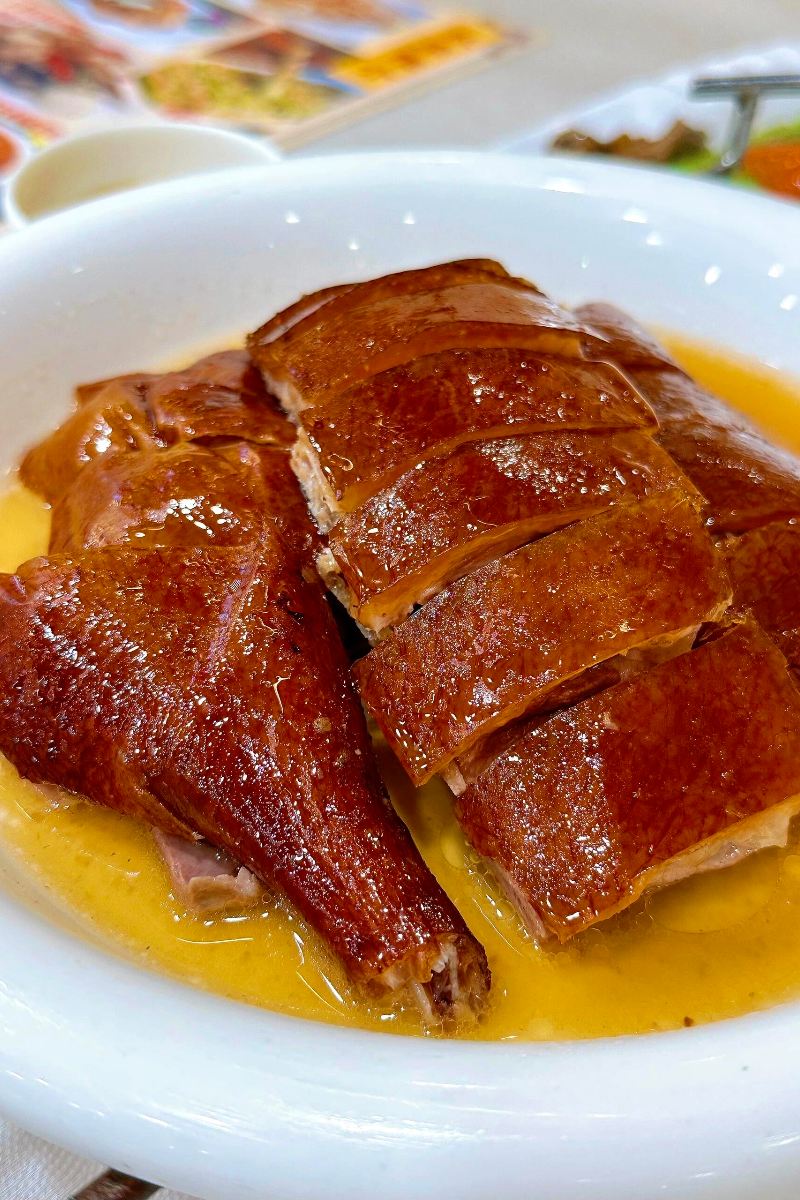
Roasted Goose
A dish with a centuries-long history, roasted goose has been a centerpiece of Cantonese feasts. It is grounded in the celebratory feasts of Guangdong. With golden brown skin and succulent meat, It’s a celebratory tradition, especially around holidays. Michelin-starred restaurants in Guangzhou adhere to the traditional conventions established. They marry the dish as cultural inheritance and fine dining art. It’s considered a luxury by locals, and to me, it was the ultimate indulgence in Guangzhou food.
Some fermented bean curd and maltose syrup are used to marinate the bird. Then it’s roasted until the skin turns into a glossy lacquer. When you slice through the skin, the meat is so tender and the seasoning so aromatic. The audible sound of crisp skin and pungent smell are a sensory experience. It lingers with me long after the meal ends. Portions cost over ¥400. Whole ones are the standard, although some places do half orders. For an unforgettable experience, go to a place like Yan Toh Heen or one of Guangzhou Restaurant’s more high-end outlets. They treat the goose with great precision and care.
Budgeting and Prices
A dim sum meal typically runs ¥50–¥150 per person. Michelin dining can exceed ¥300. Street food lunches typically range in price from ¥20–¥40. Travelers can adapt their budgets easily. I share dishes with friends whenever possible, to save money and to try more things in a single meal.
Ordering and Language Tools
A lot of the menus are in Chinese, so I’ll whip out apps like Pleco or Google Translate. At dim sum restaurants, the tick-off menus are illustrated, so it’s easy to order. For smaller shops, a point will do. I find that knowing a little bit of Cantonese — how to say “yum cha,” the colloquial term for “tea time” — enhances the experience. It is also a way for locals to warm up to you.
Apps and Avoiding Tourist Traps
For restaurant reviews, I turn to apps like Dianping and Meituan. Most of them are in Chinese, but Trip. com offers an English interface. And I take Baidu Maps or Maps for directions. me. They are more accurate in China compared to Google Maps. I always steer clear of tourist traps near big hotels. Their prices are inflated. I instead walk a few more blocks for true flavors that the locals enjoy.
FAQs: Answering Your Guangzhou Food Questions
Bite of the MomentQ: What’s the first thing I should eat in Guangzhou?
A: If it's your first time in Guangzhou, try with har gow or siu mai. The 1 layer wrapper of the shrimp dumpling was thin and nearly transparent. Siu mai is juicy with pork and shrimp. Individually they demonstrate the equilibrium between freshness and light seasoning that characterizes Cantonese food. Eating them in a teahouse allows you to eavesdrop on locals’ conversations and teapot clinks. Prices are reasonable, ranging between ¥20 and ¥35.
Q: As a foreign traveler, will I be able to find affordable street food?
A: Yes, there is a lot of cheap street eats in Guangzhou. In the vicinity of Shangxiajiu and Beijing Road, eateries sell beef offal stew, rice noodles, and skewers for ¥10–¥20. My secret is to learn from the locals. Have small bills ready — lots of vendors refuse to take foreign credit cards. Street food is more than just people eating. It’s joining locals under neon lights and vibrant night markets.
Q: How easy is it to make food orders if I don’t speak any Chinese?
A: Ordering can be rough, but it gets easier. Tick-off menus with pictures are the norm at many dim sum places. You can always point at a street stall. I rely on a translation app such as Pleco for clarification of ingredients. Some staff in busier districts have basic English. Locals usually appreciate any effort. And the occasional mistake can even yield a nice surprise.
Q: Are there options for vegetarians, vegans, or people with restricted diets in Guangzhou?
A: Vegetarian fare is widespread, owing to Buddhist culture. Plant-enamored tea house Chan Yi serves plant-based dim sum. Ci Sheng dishes out mock meats from tofu. Luo Han Zhai – another classic dish ¥40-¥60 per set Vegan travelers should always inquire about eggs or dairy. Options include tofu rolls and veggie hotpot, displaying another side of Guangzhou food.
Q: Are Michelin-starred restaurants worth it for tourists?
A: Dining in a Michelin restaurant is expensive and memorable. Live seafood, soups and roast meats cost ¥300–¥500 per head. Reservations frequently required, and there are dress codes. And sure, if you’re curious how Cantonese food can be at its most refined, it’s worth trying once. Then you can compensate with more casual meals.
Q: What is a reasonable figure for an average meal in Guangzhou?
A: The dining cost for the dim sum at teahouses is generally ¥50–¥150 per person. Street food meals are* ¥20–¥40*. High-end dining can reach ¥300–¥500. Portions are large, so sharing with friends keeps costs down. Drinks can quickly add up, but for the most part, Guangzhou is inexpensive compared with many Western cities. Food in Guangzhou is suitable for backpackers and luxury travelers.
